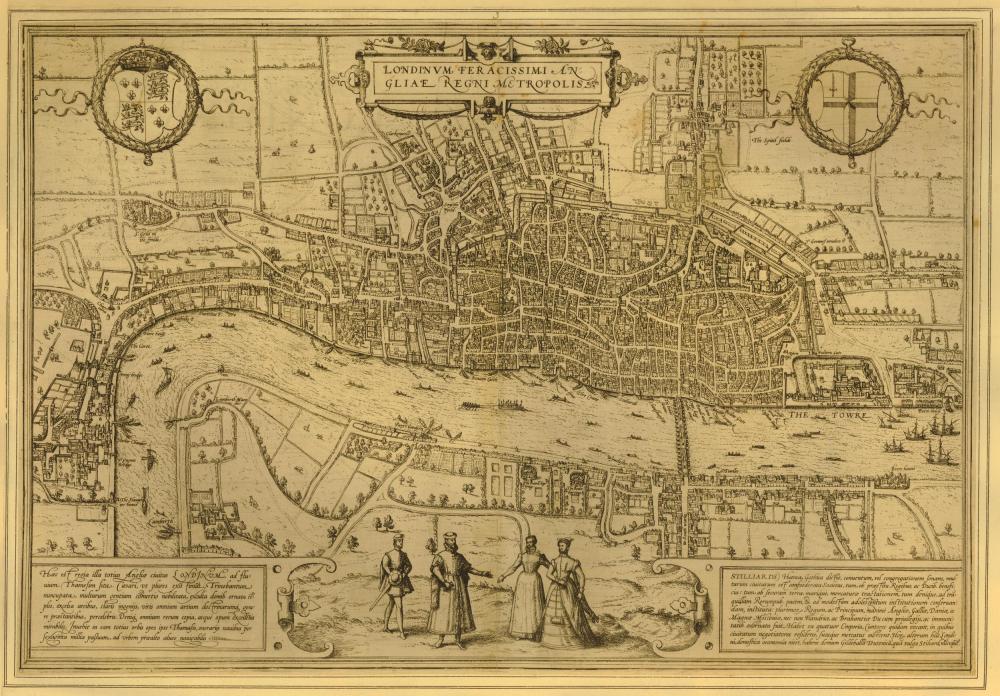Labours Lost: Working Lives Across Continents

This option is an introduction to the study of labour history, looking at the ways in which people have made their living in different societies at different times, and how these patterns create economic change. In 2023-24 the focus will be on London c.1600.
Shakespeare’s Love’s Labour’s Lost, written in the mid-1590s, is a comedy about monarchs and their courts which was first performed in the ‘inns of court’ where lawyers trained. We will examine two unique contemporary sources to understand the labour of the other 98% of the population below the aristocracy and elite professionals. First, a 1573 poem by Isabella Whitney elucidates a long list of the many trades of London and their geography within the capital’s narrow streets. Whitney was the first woman to publish secular poetry in English, and the little that is known about her illuminates the trade of writer that was new in the sixteenth century. Second, a 1599 ‘census’ of Ealing lists the residents in their households, together with their occupations. Ealing was then a village ten miles west of London, but the employment that is listed and that can be deduced make clear that the economic activity here was closely tied to the capital. London in 1600 held nearly 200,000 people and the population had more than doubled in the previous fifty years as a result of large-scale immigration from the surrounding countryside, from further parts of England and the British Isles. Almost all of that migration was in search of work, so we will consider questions of social mobility and gender, as well as think about what exactly is meant by ‘labour’ – how skill is learned, when work is unpaid what the value might be, and when it is paid, whether it was in the form of service, piece work, day labour, or entrepreneurship and what the essential differences might be between those forms of employment.
One of our sources is literary, written for entertainment, and the other is a list, compiled for unknown purposes. Both can be analysed linguistically and numerically. Students will engage with the whole of each source in depth, to gain an understanding of provenance, format, tone, genre, and methods of deduction. They will also appreciate the significance of labour history in its broadest sense and in its connection with economic development, and achieve a comparative perspective on a range of sources employed by historians for the study of work. This hands-on introduction to qualitative and quantitative methods of analysis will provide a detailed understanding of the differences between narrative and statistical forms of understanding, offering an excellent basis for future historical investigation in the Part IB Research Project or a Part II dissertation. These forms of critical thinking are valuable transferrable skills for information analysis in any field. No prior knowledge of the period is necessary.
Image: Image of a tea garden in Assam from the 1913 book The Empire of India.
